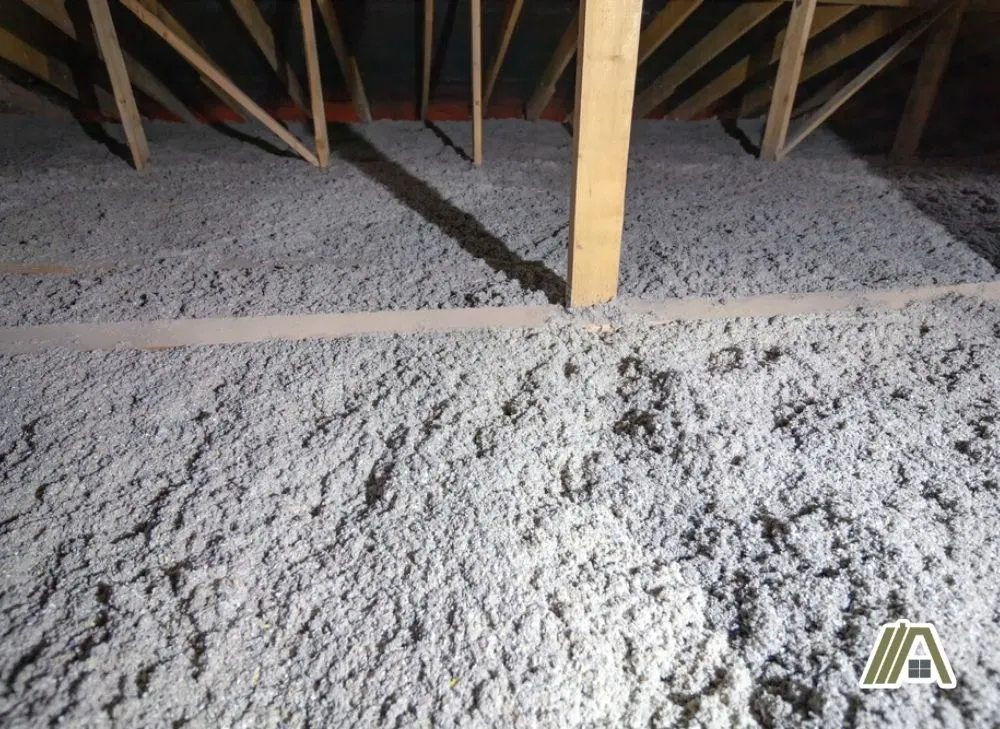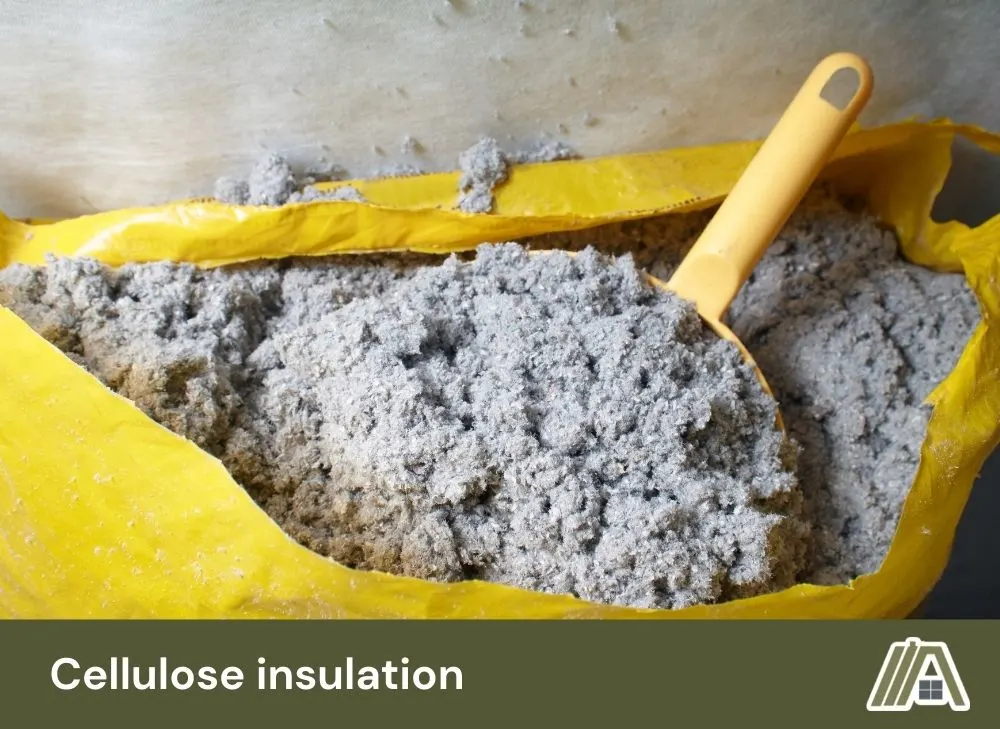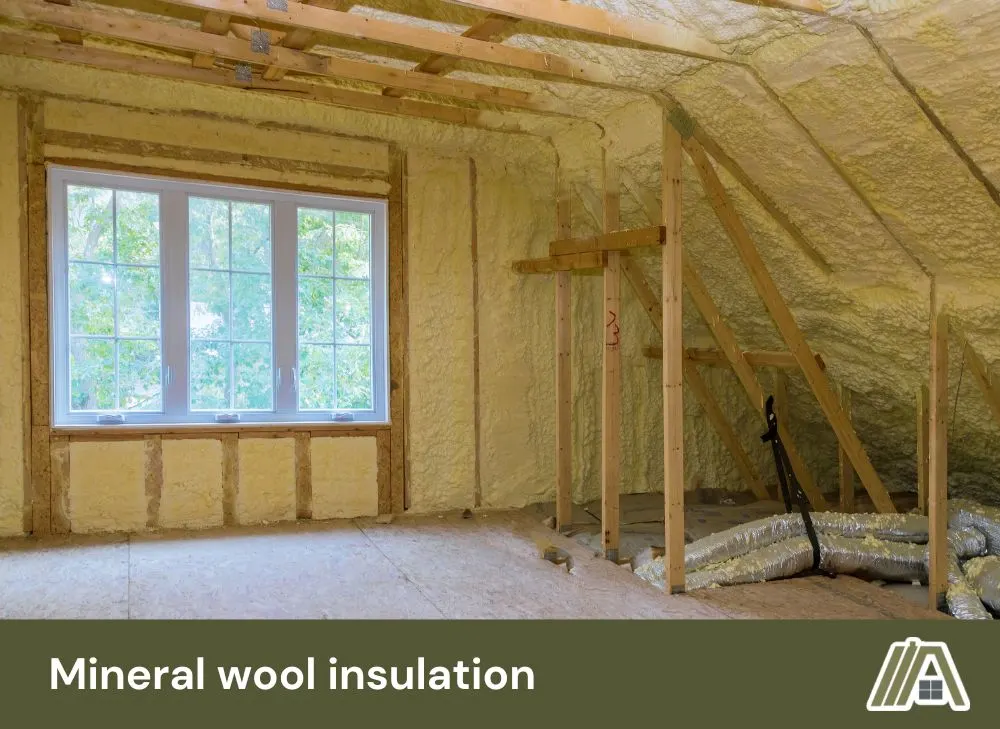Insulation is an incredibly important part of a building for a multitude of reasons—comfort, cost, and noise insulation are just some of them. Blown-in insulation is particularly useful for packing small, hard-to-fill spaces.
However, like with many construction materials, it’s recommended to wear PPE when working with blown-in insulation since it isn’t safe in all contexts. Let’s examine the most common types of blown-in insulation and why they can be hazardous if not handled correctly.

Blown-in insulation readily becomes airborne and can easily be inhaled. The three main types are fiberglass, cellulose, and mineral wool. Fiberglass can cause micro-abrasions and irritation to the skin and lungs. Cellulose and mineral wool can cause irritation to the skin and lungs.
General Risks Associated With Blown-in Insulation
Blown-in insulation is, as the name suggests, a type of insulation that can literally be blown into spaces that require it. This is possible because it is actually made up of small bits of easily separable material rather than one large piece.
Depending on the material used, some blown-in insulation may be in a small pellet form. However, the most common types of blown-in insulation are loose and fibrous.

Unfortunately, due to this loose nature, small fibers of blown-in insulation can easily disperse into the air and find their way to places they shouldn’t be. That doesn’t just include floating into rooms in the house but making direct contact with you!
Although insulation is safe within your walls, it can be harmful to your skin, eyes, nose, or lungs. Inhalation is the biggest concern, as it can cause the most harm—and it is easy to do when microscopic fibers become airborne.
Types of Blown-In Insulation
There are three major types of blown-in insulation—namely, fiberglass, cellulose, and mineral wool. Note that loose-fill is another name for blown-in insulation, so don’t be confused if you see the terms interchangeably!
Fiberglass Blown-In Insulation
What Is It?
Fiberglass is a material made from reinforced plastic strands that are woven together, reinforced by bits of thin glass fibers.
Loose-fill fiberglass insulation comes in two forms. One is made from recycled fiberglass, while the other is made from new material that was specifically spun to be used as blown-in insulation.
Either way, it is an effective, noncombustible insulation material that is far cheaper than its counterparts.
Associated Risks
While fiberglass may be a cheap and effective insulation material, it is a rather potent irritant.
Your skin can be itchy and irritable for quite some time after coming into contact with fiberglass, and you may even develop a “rash” caused by microscopic cuts from tiny glass fragments.
Similarly, it can cause your eyes to water, hurt, or show other signs of irritation.
If you manage to breathe in any tiny fiberglass fibers, this irritation can extend to the inside of your body as well. Your nasal passage, throat, and lungs can all also suffer microscopic cuts from inhaled glass fragments.
This could cause painful or difficult breathing and a sore throat. If you have a lung condition like asthma, you may find your symptoms exacerbated after fiberglass exposure.

While you should eventually heal from direct exposure to fiberglass, it could take weeks for your symptoms to disappear! Not only that but there may also be scarring or systemic infections to still deal with.
Fiberglass was once considered to be a Group 2B carcinogen by the IARC (International Agency for Research on Cancer). This means that it used to be classed as “possibly carcinogenic to humans.”
However, in 2001, it was reclassified as a Group 3 carcinogen or as “unclassifiable as carcinogenic to humans.”
In other words, studies and meta-analyses have determined that fiberglass is likely safe outside of its irritability, and there is no evidence to show it increases the risk of cancer.
However, it’s still a good idea to be careful around the material, even if only to avoid the irritation caused by micro-abrasions.
Cellulose Blown-In Insulation
What Is It?
Cellulose insulation is a more environmentally friendly insulation material that is primarily made up of recycled paper products like newspapers, cardboard, office papers, and other wood-based items.
This type of insulation is rather dense and clumpy, and is usually treated with borax, borates, or boric acid in order to make it mold, pest, and heat-resistant.
Associated Risks
While cellulose may sound great as a “naturally-derived” insulation material, it does still have its drawbacks and health risks.
For starters, cellulose insulation is not purely wood and borax. It can contain traces of other chemicals like formaldehyde, chlorine, and lead, which are used to break down the wood into a fibrous state.
Cellulose may also contain inks, dyes, and solvents from any recycled materials that were used to create it.

To anybody with skin or chemical sensitivities, cellulose may be itchy or irritating. It may not literally scratch the skin and cause microabrasions in the same way fiberglass does, but that doesn’t make it completely harmless!
Furthermore, small cellulose particles can be breathed in and cause irritation to the lungs, alongside any chemicals lingering on them.
Lastly, blown-in cellulose insulation can become a breeding ground for mold! It takes quite a bit of time for this type of insulation to dry should any water leak onto it, and while the treatment applied to it may make it mold-resistant, it isn’t mold-proof.
Exposure to mold could cause symptoms like sneezing, coughing, wheezing, fatigue, difficulty breathing, and more.
Cellulose insulation has not been classified by the IARC, but it is known that cellulose itself is not a carcinogen.
However, many of the chemicals and materials that can be found in cellulose insulation are known carcinogens. Formaldehyde is one example.
With this being the case, it is incredibly important to wear proper PPE when working with cellulose insulation.
There is no asbestos in cellulose insulation.
Mineral Wool Blown-In Insulation
What Is It?
Mineral wool insulation is the last type of commonly used blown-in insulation. It is made from furnace slag and trap rock, which is an extremely fine-grained rock.
It is made by heating up these components to extremely high temperatures, and then spinning them to create a fibrous material (like cotton candy!) that is then coated in a binder, so it maintains its shape.
As you might imagine, this type of insulation is dense and somewhat firm, but it is also “fluffy” and almost resembles wool. It may also be referred to as rockwool, slag wool, or stone wool.
Associated Risks
Mineral wool was developed as a replacement for asbestos, once we learned of its health risks and carcinogenic nature. However, while mineral wool is far less dangerous than asbestos, it does still have its own health risks.

Much like other types of blown-in insulation, it can be easily inhaled as small portions of it break off and become airborne. From here it can cause irritability in the lungs, breathing difficulty, or other respiratory problems.
Additionally, harmful binders may be used in its production. Formaldehyde is one material commonly used as a binder for mineral wool, and as we know, formaldehyde is a known carcinogen.
While most formaldehyde used in the creation of mineral wool has dissipated from the material during production, small trace amounts may still remain.
Overall, the IARC has classified mineral wool as a Group 3 carcinogen. Once again, a Group 3 classification means a material is “not classifiable as carcinogenic to humans.”
However, mineral wool insulation has come under the microscope again. Recent studies suggest that the manner in which the IARC has determined the material to be safe may not have been entirely accurate.
With that in mind, a level of caution is certainly required when working with mineral wool insulation. While we do not yet have definitive confirmation that it is carcinogenic, the possibility still remains.
Sources
https://doh.wa.gov/community-and-environment/air-quality/indoor-air/fiberglass
https://insulationinstitute.org/wp-content/uploads/2016/01/BI456.pdf
https://pubmed.ncbi.nlm.nih.gov/21345360/
https://pubs.acs.org/doi/10.1021/acs.chemrestox.0c00401
https://stormmasterinc.com/blog/roofing/loose-fill-insulation-features-and-benefits/
https://www.angi.com/articles/diy-dangers-fiberglass-insulation-hazards.htm
https://www.atsdr.cdc.gov/ToxProfiles/tp161-c8.pdf
https://www.bobvila.com/articles/blown-in-insulation/
https://www.buildinggreen.com/blog/mineral-wool-insulation-entering-mainstream
https://www.buildwithrise.com/stories/what-is-mineral-wool-insulation
https://www.epa.gov/sites/default/files/2016-10/documents/fine-mineral-fibers.pdf
https://www.eupoliticalreport.eu/what-is-mineral-wool-and-what-are-the-health-concerns/
https://www.finehomebuilding.com/project-guides/insulation/blown-mineral-wool-insulation
https://www.forbes.com/home-improvement/home/blow-in-cellulose-insulation/
https://www.homelogic.co.uk/cellulose-insulation-health-risks
https://www.service-partners.com/insulation-supplies/mineral-wool-insulation/blown-in/
https://www.thespruce.com/blowing-in-insulation-vs-rolling-out-fiberglass-1821913
https://www.thespruce.com/cellulose-insulation-basics-1821904
https://www.trenchlesspedia.com/definition/4576/blast-furnace-slag-well-cementing-operations
